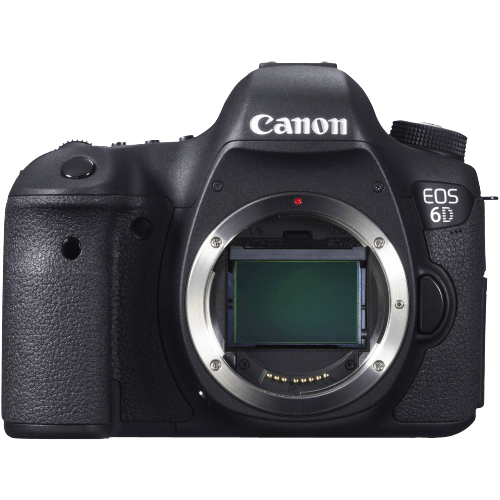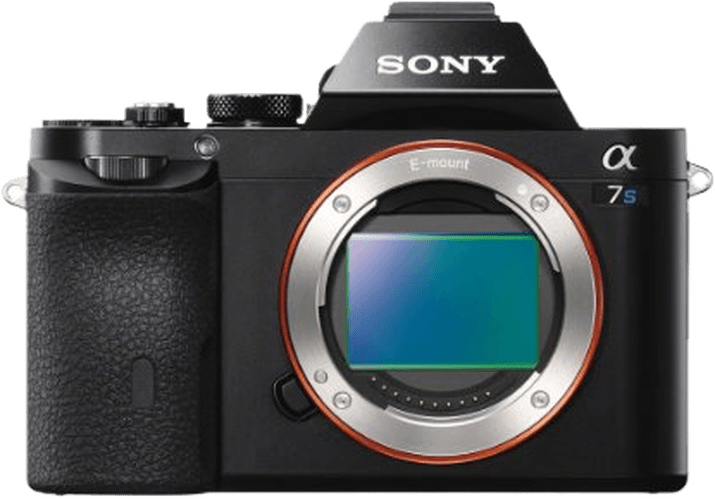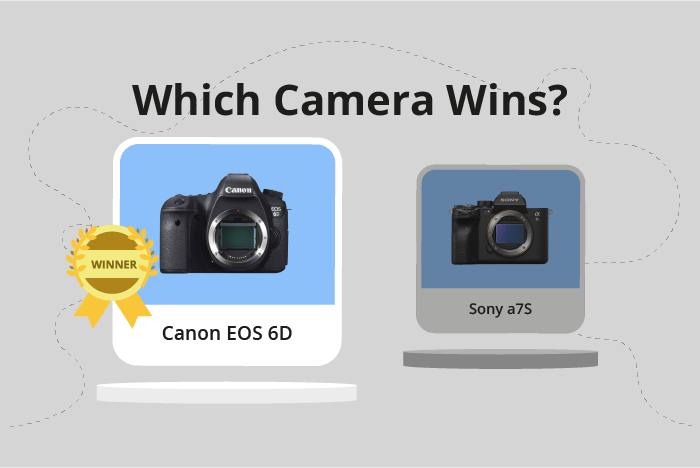Canon EOS 6D vs Sony a7S Comparison
Canon EOS 6D

Sony a7S

The Canon EOS 6D outperforms the Sony a7S with a score of 59/100 compared to 55/100. Both cameras share similarities such as their announcement year (2012 for EOS 6D and 2014 for a7S) and high launch prices ($2099 for EOS 6D and $2499 for a7S).
The Canon EOS 6D, a DSLR camera, excels with its larger size (145 x 111 x 71mm) and heavier weight (770g / 1.70lbs), which may provide better stability and handling. On the other hand, the Sony a7S, a mirrorless camera, offers a compact design (127 x 94 x 48mm) and lighter weight (489g / 1.08lbs), making it more portable and convenient for on-the-go photography.
Taking these factors into account, the Canon EOS 6D proves to be a better option for those who prioritize stability and handling, while the Sony a7S caters to photographers who value portability.
Canon EOS 6D vs Sony a7S Overview and Optics
The Canon EOS 6D outperforms the Sony a7S in optics with a score of 61/100, compared to the Sony a7S’s score of 60/100. Both cameras possess several common specifications, including a CMOS sensor, Full Frame sensor size, and no image stabilization. Additionally, they both have distinct lens mounts, with the Canon 6D utilizing the Canon EF mount and the Sony a7S using the Sony FE mount.
The Canon EOS 6D surpasses the Sony a7S in megapixels, boasting 20.2 megapixels compared to the Sony a7S’s 12.2 megapixels. This difference results in higher image resolution and detail for the Canon 6D, making it better for capturing intricate subjects and producing larger prints. Furthermore, the Canon 6D is equipped with a Digic 5+ processor, which contributes to its efficient performance and processing capabilities.
On the other hand, the Sony a7S has a slightly faster shooting speed at 5 frames per second, compared to the Canon 6D’s 4.5 frames per second. This advantage enables the Sony a7S to capture fast-moving subjects more effectively. Additionally, the Sony a7S has a higher DXOMARK score for the sensor, scoring 87 compared to the Canon 6D’s score of 82. This indicates that the Sony a7S has better low-light performance and dynamic range.
Considering the optics of both cameras, the Canon EOS 6D is superior in terms of image resolution, while the Sony a7S excels in shooting speed and low-light performance. Ultimately, the choice between these two cameras depends on the specific needs and preferences of the photographer.
Canon EOS 6D vs Sony a7S Video Performance
The Sony a7S emerges as the winner in video capabilities, scoring 56 out of 100 points, while the Canon EOS 6D trails behind with a score of 43. Both cameras share similar specifications in terms of maximum video resolution and dimensions, offering Full HD quality at 1920 x 1080 pixels. However, there are notable differences that set them apart.
The Sony a7S stands out due to its higher maximum video frame rate of 60fps, double the Canon EOS 6D’s 30fps. This allows the Sony a7S to capture smoother and more fluid motion, making it more suitable for fast-paced action and sports videography. The higher frame rate also provides greater flexibility in post-production, enabling slow-motion effects without compromising video quality.
On the other hand, the Canon EOS 6D does not surpass the Sony a7S in any specific video-related aspect. Both cameras lack built-in time-lapse functionality, which could be a drawback for photographers interested in capturing long-duration events or creating time-lapse videos without additional equipment or software.
Considering the differences in video capabilities, the Sony a7S is the better option for those prioritizing video performance. Its higher frame rate ensures smoother footage and increased versatility in post-production, making it an excellent choice for videographers and content creators. The Canon EOS 6D, while offering adequate video quality, does not excel in this area and may not be the ideal choice for those focusing on video capture.
Canon EOS 6D vs Sony a7S Features and Benefits
The Canon EOS 6D outperforms the Sony a7S in features with a score of 57 out of 100, compared to the Sony a7S’s 54. Both cameras share some specifications: they have 3-inch screens, lack touchscreens and Bluetooth, and offer Wi-Fi connectivity.
The Canon EOS 6D’s advantages include its higher screen resolution of 1,040,000 dots, compared to the Sony a7S’s 921,000 dots, which results in a clearer and more detailed display for viewing images. Additionally, the EOS 6D has GPS functionality, allowing users to geotag their photos and track locations, a feature absent in the Sony a7S.
On the other hand, the Sony a7S offers a flip screen, giving users more flexibility when composing shots at different angles. This feature is not available in the Canon EOS 6D, which has a fixed screen. Despite having a lower feature score, the Sony a7S’s flip screen may be a deciding factor for some photographers.
In comparing the features of the Canon EOS 6D and the Sony a7S, the EOS 6D has a slight edge due to its higher screen resolution and GPS capabilities. However, the Sony a7S provides the convenience of a flip screen, which may be more important to certain users. Ultimately, the choice between these two cameras depends on individual preferences and the specific features that are most important to the photographer.
Canon EOS 6D vs Sony a7S Storage and Battery
The Canon EOS 6D outperforms the Sony a7S in storage and battery with a score of 45/100 compared to the a7S’s 21/100. Both cameras share similarities, including one memory card slot and compatibility with SD, SDHC, and SDXC memory cards. Neither camera offers USB charging.
The EOS 6D excels in battery life, providing 1090 shots per charge with its LP-E6 battery, while the a7S lags behind, supplying only 380 shots using the NP-FW50 battery. This significant difference makes the 6D a more reliable choice for extended shooting sessions.
The Sony a7S, however, accepts additional memory card formats, such as Memory Stick Duo, Pro Duo, and Pro-HG Duo, offering users more flexibility in storage options. Despite this advantage, its overall storage and battery performance does not surpass the Canon EOS 6D.
Considering the storage and battery capabilities, the Canon EOS 6D proves to be a superior choice, especially for photographers requiring longer battery life. The Sony a7S provides added storage options but falls short in battery performance.
Canon EOS 6D vs Sony a7S – Our Verdict
Are you still undecided about which camera is right for you? Have a look at these popular comparisons that feature the Canon EOS 6D or the Sony a7S:

